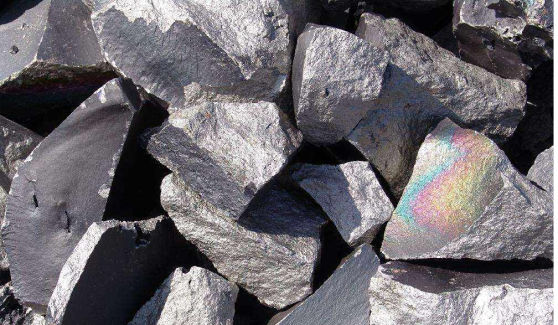Basic knowledge
Manganese and silicon are the main alloying elements used in carbon steel. Manganese is one of the most important deoxidizers in the steel-making process, and it is required for deoxidation in almost all steel types. Because the oxygen products generated by deoxidation with manganese have a lower melting point and are easier to float; manganese can also enhance the deoxidation effect of strong deoxidizers such as silicon and aluminum. All industrial steels need to add a small amount of manganese as a desulfurizer to enable the steel to undergo hot rolling, forging and other processes without breaking. Manganese is also the most important alloying element in various steel types, and in alloy steel, more than 15% of manganese is added to increase the structural strength of the steel. Silicon is the second most important alloying element after manganese in pig iron and carbon steel. In steel production, silicon is mainly used as a deoxidizer for molten metal or as an alloy additive to increase the strength and improve the performance of the steel. Silicon is also an effective graphite-forming medium, which can convert the carbon in cast iron into free graphite carbon. The silicon content in standard gray cast iron and ductile cast iron can reach 4%. And a large amount of manganese and silicon are added to the molten steel in the form of iron alloys: manganese iron, silicon manganese and silicon iron.
The raw materials for producing manganese-silicon alloys include manganese ore, rich manganese slag, silica, coke, dolomite (or limestone), fluorspar. Producing manganese-silicon alloys can use a single manganese ore or a mixture of several manganese ores (including rich manganese slag). Since manganese-silicon alloys require a lower iron and phosphorus content than high-carbon manganese iron, the manganese ore used for smelting manganese-silicon alloys requires a higher manganese-iron ratio and manganese-phosphorus ratio. The manganese ore used should have a higher manganese content for better indicators.
Principles
The smelting of silicon-manganese alloy by electric furnace is similar to the smelting of carbon-manganese iron. In the furnace charge, Fe and P are first reduced. The high-valent oxide of Mn decomposes at the upper layer or is reduced by CO to the low-valent oxide MnO. The low-valent oxide MnO then reacts with C to form carbides. The reaction equation can be written as
MnO+(1+x)C→MnCx+CO
As the furnace charge sinks into the high-temperature zone, the reaction of carbon reducing SiO2 begins to occur.
SiO2+2C=Si+2CO
The recovered Si then reacts with the already formed MnCx to form a silicon-manganese alloy, and this also promotes the reduction of Si. The reaction equation is
SiO2+2C+MnCx=Mn·Si·Cx+2CO
The more silicon is generated, the more thoroughly the carbides are destroyed, and the lower the carbon content of the alloy becomes. When the silicon content of the alloy is less than 23.5% (such as silicon-manganese 10, silicon-manganese 14, silicon-manganese 17 and silicon-manganese 20), the reaction of silicon destroying the carbides can be written as
(Mn,Fe)7C3+7Si=7(Mn ·Fe)Si+3C
If the silicon content is high, the reaction that destroys the carbides can be written as
(Mn,Fe)7C3+10Si=7(Mn·Fe)Si+3SiC

From Baidu
